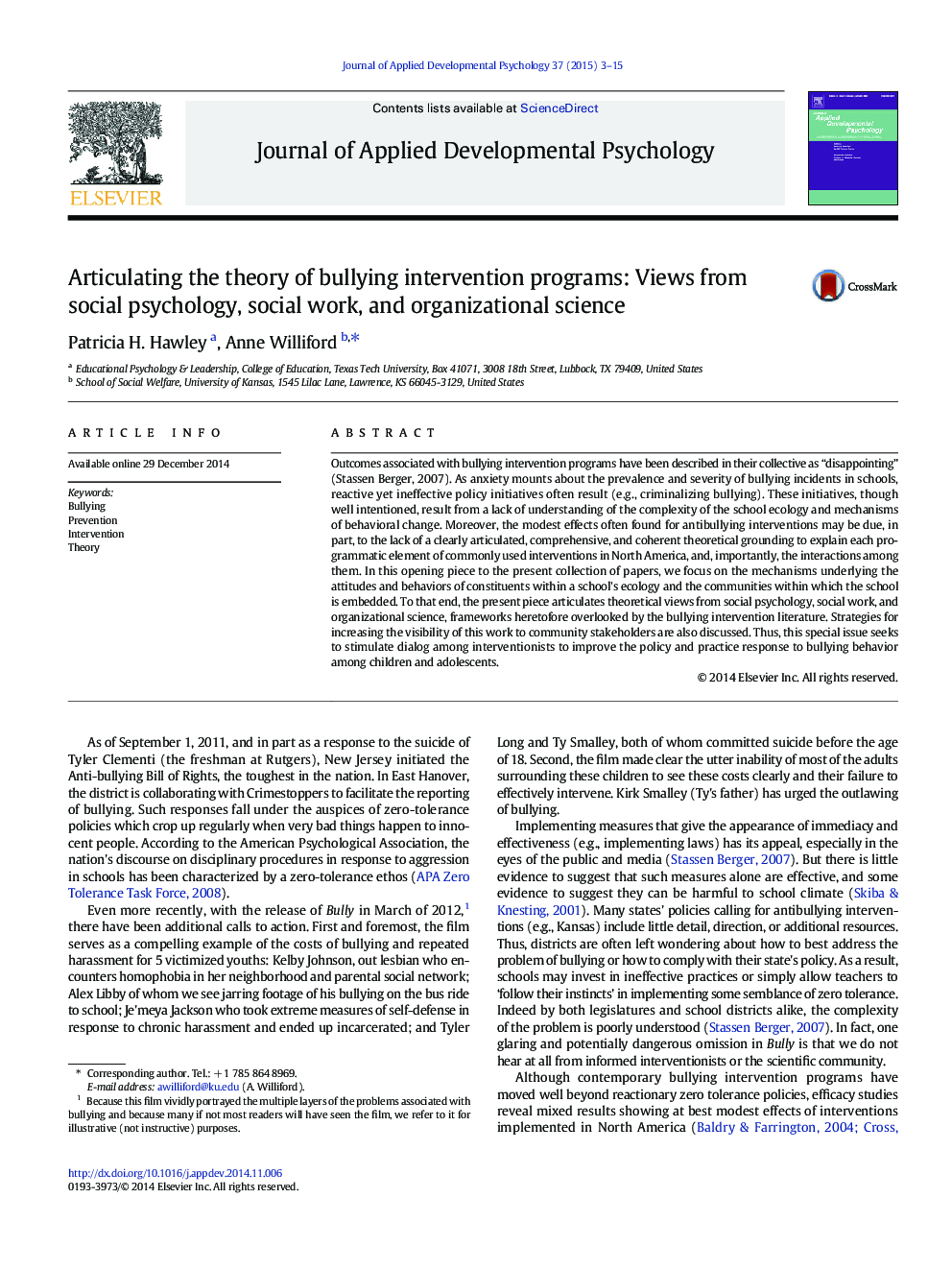| Article ID | Journal | Published Year | Pages | File Type |
|---|---|---|---|---|
| 359656 | Journal of Applied Developmental Psychology | 2015 | 13 Pages |
•Define the problem of bullying and introducing the concept of power.•Integrate the Theory of Planned Behavior and explicate its primary tenets.•Draw attention to Bronfenbrenner's theoretical perspectives on the macro system.•Introduce empirical and theoretical work from organizational science.•Close by offering recommendations to enhance intervention efforts.
Outcomes associated with bullying intervention programs have been described in their collective as “disappointing” (Stassen Berger, 2007). As anxiety mounts about the prevalence and severity of bullying incidents in schools, reactive yet ineffective policy initiatives often result (e.g., criminalizing bullying). These initiatives, though well intentioned, result from a lack of understanding of the complexity of the school ecology and mechanisms of behavioral change. Moreover, the modest effects often found for antibullying interventions may be due, in part, to the lack of a clearly articulated, comprehensive, and coherent theoretical grounding to explain each programmatic element of commonly used interventions in North America, and, importantly, the interactions among them. In this opening piece to the present collection of papers, we focus on the mechanisms underlying the attitudes and behaviors of constituents within a school's ecology and the communities within which the school is embedded. To that end, the present piece articulates theoretical views from social psychology, social work, and organizational science, frameworks heretofore overlooked by the bullying intervention literature. Strategies for increasing the visibility of this work to community stakeholders are also discussed. Thus, this special issue seeks to stimulate dialog among interventionists to improve the policy and practice response to bullying behavior among children and adolescents.
